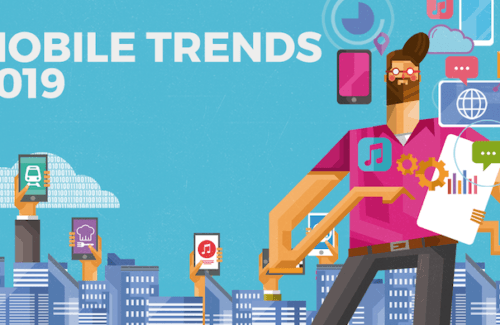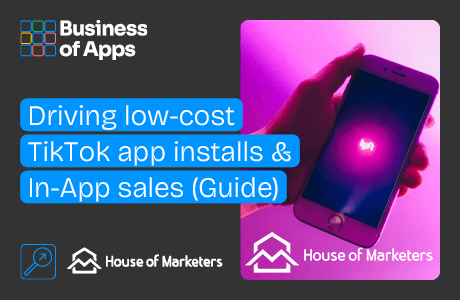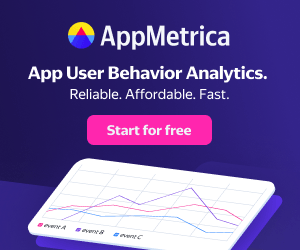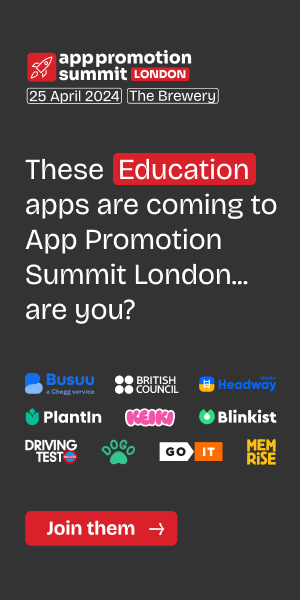In today’s mature app market, consumers are much more discerning about the apps they allow into their lives. According to App Аnnie data, consumers use only 10 apps a day on average, and regularly uninstall those they don’t use anymore. The intense competition for users means mobile app marketers must constantly be aware of the complex and changing industry and react with sophisticated strategies to new opportunities. After working with leading brands to plan their 2019 mobile app marketing strategies, here are 7 trends you should expect to see in 2019.
Improved transparency will drive programmatic into mobile in-app
2018 just might go down in history as the year of total ad fraud hysteria. The industry has slowly been waking up to some inconvenient truths and this year uncovered many scandals. Nearly every mobile conference this year has had talks and special panels addressing the topic, but the result of this fraud-focused year have been big strides towards transparency, particularly in the programmatic arena. As programmatic is increasingly viewed as the antidote to ad fraud, more marketers will be making the transition to using programmatic for their in-app bidding and full transparency of site name or app name where their ads are placed will become standard.
Improved targeting and audience segments
A crowded market means app marketers need to launch smarter and more sophisticated campaigns. In 2019, we will see more strategic targeting and segmentation that will make more effective use of second- and third-party data tools. AI-powered smart targeting tools will increase marketers’ ability to reach out to the highest potential audiences. Better targeting not only improves marketing effectiveness but improves the experience of marketing for the end user, as they will increasingly see more relevant ads that align with their specific interests.
Creatives will get even more creative
2019 will see an increased emphasis on new creative formats, especially those that are interactive and encourage engagement. Playable and Gameplay ads, if done right, spark users’ curiosity and marketers gain the ability to present the most eye-catching aspects of their app without having to first get over the hurdle of an install event. Short video ads have also been gaining popularity in the last few months, and with 87% of online marketers reporting they use video content in their marketing strategies, this trend looks like it will continue going strong next year.
Higher standards for attribution
Marketers are increasingly keen on transparency and demanding higher standards for attribution. In 2019, the onus will be on MMPs to allow easier access (i.e.. less fees) to multi-touch attribution as well as custom attribution windows that align more closely to advertisers’ unique consumer patterns. Multi-touch attribution, specifically VTA + CTA, not only offers marketers a better understanding of their user journey but also provides a powerful mechanism to mitigate fraud. For instance, by tracking rates of assisted installs v. attributed installs and watching for abnormal attribution distribution patterns, marketers can easily spot the presence of bad actors in their attribution environment. Although there is no magic formula, MMPs will have to adapt to the needs of the market and provide the tools and protections marketers are increasingly demanding.
Reliance on outsourcing and external specialists will increase
With over 5 million apps in the App Store and another 5 million in Google Play, app marketers are struggling to break through the clutter. As the tools and strategies are getting more complex and data-driven, companies are increasingly looking for external experts and agencies to take over managing different channels like Paid, ASO, Retargeting, Analytics, etc. Additionally, app developers are beginning to look at smaller app stores – Amazon Appstore, GetJar, Appolicious and Samsung store as channels to reach new users who are more willing to explore outside the millions of apps in the App Store and Google Play.
Gaming app developers will increase focus on emerging markets and women
Gaming app developers are always the first to move into new markets to chase opportunities, and according to a recent report commissioned by Newzoo and Headway, LATAM’s gaming market grew 20% last year and became the 5th largest gaming market in the world. Additionally, female gamers will become a higher priority, as of 2018, the number of female mobile gamers has grown to 65% of the US female population. What’s more, women are 79% more likely to make in-app purchases while playing mobile games, which makes the demographic a profitable audience to target. As women’s gaming preferences lean towards games that feature strong central characters, community, and lots of customization, we will see a trend towards these characteristics as developers begin to build games and apps from the bottom up with women in mind.
The rising importance of influencers in Mobile
Mobile app marketers have already been using influencers to get their apps in front of new audiences, but the influencer industry looks like it is trending towards quality, not quantity, for 2019. Even though recommendations by influencers have been shown to encourage downloads at higher rates, as paid influencer becomes more common, app marketers will have to work harder to establish authentic relationships with strategic influencers, who in turn can develop a more authentic promotional strategy for their user base. Influencer marketing strategies will be more focused on building long-term relationships with a few targeted influencers and connecting those results to measurable results.













